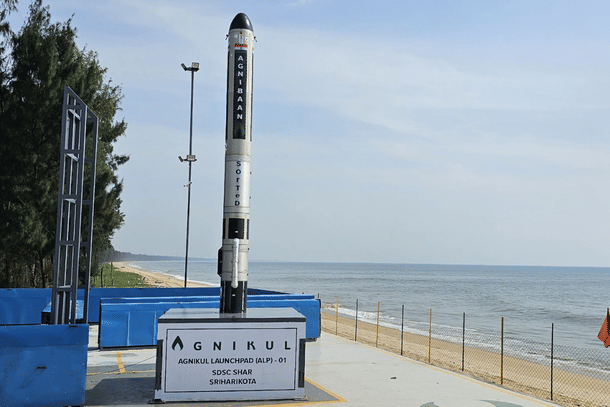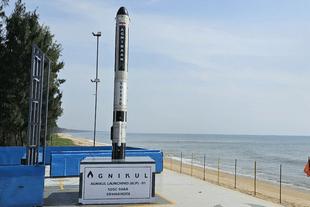News Brief
Chennai-Based Agnikul Cosmos Plans To Launch Customised Satellites By Early 2025 After Successful Agnibaan Test
Bhuvan Krishna
Jun 02, 2024, 05:38 PM | Updated 05:38 PM IST
Save & read from anywhere!
Bookmark stories for easy access on any device or the Swarajya app.


Following the successful test flight of Agnibaan SOrTeD, Chennai-based space start-up Agnikul Cosmos now aims to launch satellites from early next year.
According to a report from The Economic Times, Agnikul co-founder and CEO Srinath Ravichandran shared that their 3D-printed semi-cryogenic engines and rockets will offer quick turnaround times for customers, allowing for customised launch vehicles for their satellites.
"Nine to 12 months, I would say. Probably by the end of this financial year or the early part of the next financial year is what we are targeting," Ravichandran said regarding the commercial orbital launch of the Agnibaan rocket.
The inaugral test flight of Agnibaan SOrTeD (suborbital technology demonstrator) on 30 May lasted for 66 seconds and was preceded by four unsuccessful attempts.
"It was a big sense of relief. We learned a lot about the differences between building and launching a vehicle," said Ravichandran.
It was Ravichandran whose idea to use 3D printing technology to build engines and rockets led to the founding of Agnikul Cosmos, a start-up incubated at the IIT Madras Research Park in 2017.
Ravichandran co-founded Agnikul Cosmos with Moin SPM, an operations specialist, and Satyanarayanan Chakravarthy, a professor at IIT Madras and Head of the National Centre for Combustion Research and Development.
Women engineers Saraniya Periaswamy, the Vehicle Director for Agnibaan SOrTeD, and Umamaheswari K, the Project Director of the first mission also played crucial roles in the test flight.
"Seven seconds after lift-off, we checked the health of the vehicle, and the autopilot kicked in. A bit into the flight, it started moving over the ocean, performed the pitch-over manoeuvre, and continued on its planned trajectory," Ravichandran explained.
"Once it reached about 60 seconds, we entered the wind-biasing manoeuvre, where we adjusted for wind speed and flew into the wind to minimise wind load on the vehicle," he said.
After this manoeuvre, the rocket continued to fly until burnout and then fell back into the ocean.
"There was continuous radar tracking of the vehicle, and all tracking devices and instruments worked well," Ravichandran added.
Next, Agnikul aims to master the technology of firing multiple engines simultaneously and conduct tests for stage separation.
Ravichandran also highlighted the high demand for small satellites, with 30-35 tonnes of payloads placed in low earth orbits annually. He emphasised that small satellites have a short lifespan and need regular replenishment for ongoing earth-imaging or communications applications.
The Agnibaan launch vehicle is designed to be compatible with the mobile launchpad called Dhanush and can be configured to accommodate payloads ranging from 30 kg to 300 kg, ensuring versatility for a wide range of mission requirements.
Bhuvan Krishna is Staff Writer at Swarajya.





